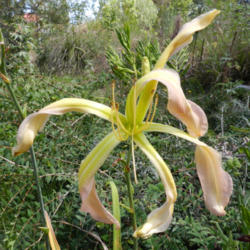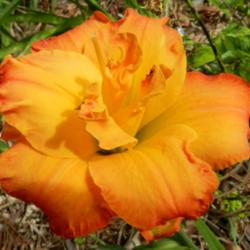florange said:she gets hotter earlier in the season and it lasts longer at her place. In the summer she will top out at 92-94 while here on the beach we seldom get over 85. With your premise, I should be able to grow some dormants and she should not. Not true! That's why I truly believe that cold helps. Our soil temperatures will reach 81-82 during the summer. My friend's soil will get over 90 degrees where it gets full sun. When I have a daylily that isn't happy down here and it is going grassy, I send it to her. Usually it will straighten up and grow up there. I'm beachside in Volusia County (Central FL) and she is in Dixie County in north FL.
OK - lets look at the situations in depth.
1) Your friend has measured her actual air temperatures and soil temperatures rather than going by the nearest weather station?
2) You have measured your actual air and soil temperatures rather than going by the nearest weather station?
3) You have both done this enough times throughout the year and in enough years that you can be confident that over a number of years and throughout the year she actually has higher temperatures for longer, etc?
That is we do not want to be misled by possible differences due to a few measurements if the overall differences would contradict the specific isolated measurements.
4) your friend plants the daylilies she received from you in the same growing conditions as you had them in your garden (e. g. full sun to full sun, shade to shade, etc.)
I have done analyses of the amount of chilling hours and units that Gainesville receives over ten year averages of winter weather - depending on the model used for the accumulation of chilling Gainesville gets no chilling hours to some chilling units for low chill plants. I can try the same for your location to see how much difference there is.
Is there a nearby town that would have at least a ten year weather record?
Do you recall the names of the registered dormant daylilies that did not do well for you and that you sent to your friend and they did well? And any that did not do well for her either?
How do southern-bred dormants grow for you? At one point Kaskel had bred some dormants in his Miami location - unfortunately I do not think they were ever registered.



